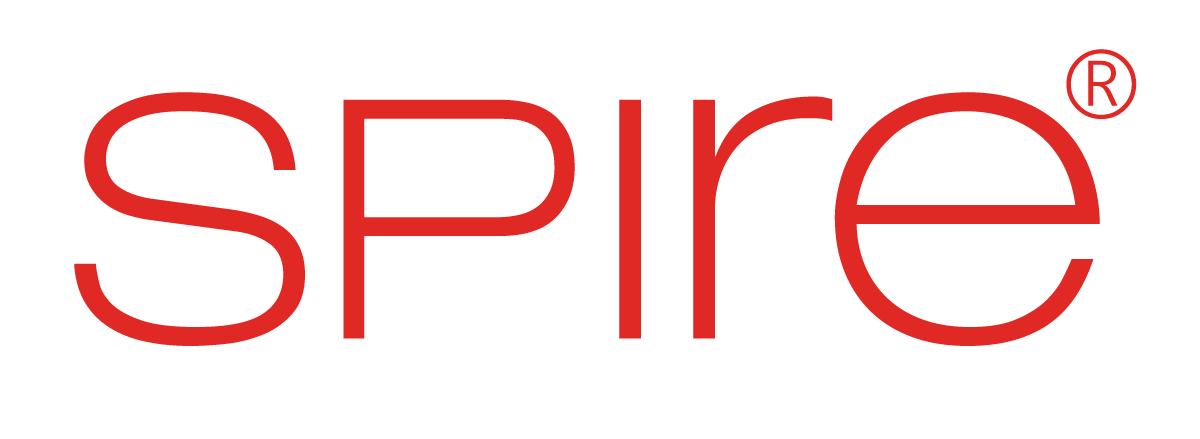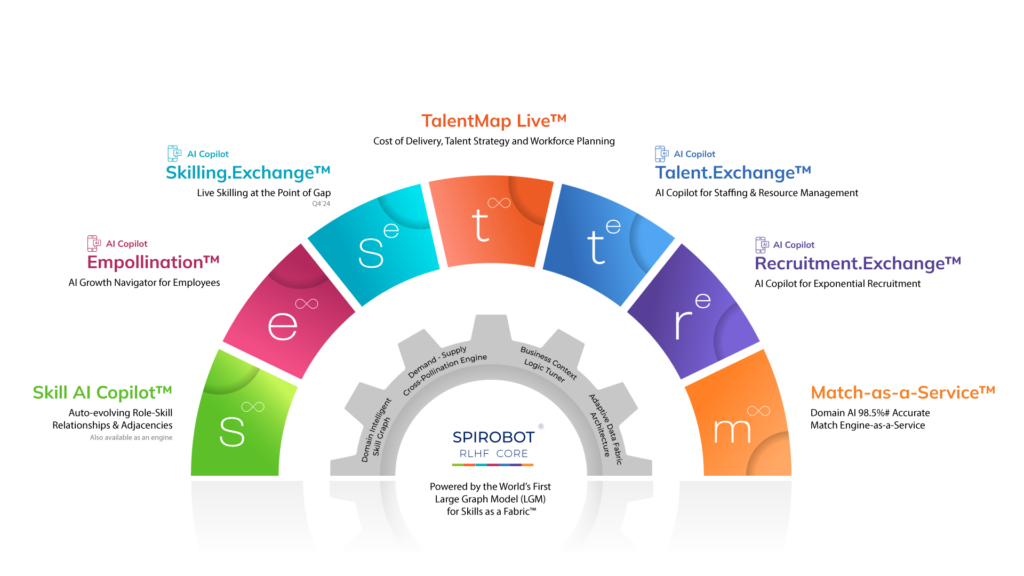The accelerated pace of technological change is reshaping industries, making workforce skills a crucial element for maintaining competitiveness. With 44% of core job skills projected to change within the next two years, businesses can no longer rely on static talent strategies. Organizations that fail to keep their workforce aligned with evolving business needs face risks such as rising recruitment costs, lost productivity, and increased attrition. Talent obsolescence can quickly derail growth when employees’ skills no longer match market demands.
A skills-first strategy offers a way forward. This approach focuses on continuous learning, internal mobility, and real-time alignment between employee capabilities and business objectives. It enables businesses to create a more adaptive and resilient workforce. This blog explores how organizations can prevent talent obsolescence and sustain growth by adopting a future-focused skills-first talent strategy.
This blog explores the risks posed by talent obsolescence and presents a skills-first approach to combating it. Leveraging advanced technologies like Domain-Intelligent AI and Large Graph Model (LGM) for Skills ensures companies remain future-ready, drive sustained growth, and stay ahead in competitive markets.
The Cost of Talent Obsolescence on Competitiveness
Talent obsolescence occurs when employees’ skills no longer align with primary roles, leaving businesses with skill gaps that hinder operational efficiency and market responsiveness. When organizations are unable to achieve a scalable cycle of continuous skill development, they face escalating recruitment costs and longer time-to-productivity for new hires. Meanwhile, internal employees become disengaged, lacking the opportunities to grow and contribute. This absence of skill development limits an organization’s ability to innovate and remain competitive.
External hiring, though necessary, cannot be the only solution to beating talent obsolescence. It often increases attrition as employees feel undervalued and seek opportunities elsewhere. Furthermore, hiring from outside the organization results in higher costs—estimates suggest that replacing a mid-level employee can cost up to 150% of their annual salary. Relying heavily on external talent makes businesses vulnerable, especially when facing talent shortages in critical roles.
Companies must leverage existing talent through proactive skill management and internal mobility to break this cycle. A skills-first strategy coupled with advanced technology provides a medium to avoid obsolescence by aligning workforce skills with market demands.
The Skills-First Strategy: Unlocking Talent Resilience
A skills-first strategy shifts the focus from roles to skills, treating workforce skills as dynamic assets that evolve with market trends. This approach allows organizations to build a resilient talent pool that meets changing business needs without relying heavily on external hiring.
Key Benefits of a Skills-First Approach:
- Internal Talent Optimization: By mapping employees to relevant internal roles based on their skills, businesses reduce the cost and inefficiencies of external recruitment.
- Continuous Employee Development: Employees develop adjacent skills that allow them to transition seamlessly to lateral or vertical roles.
- Proactive Workforce Planning: Predicting future skill demands helps organizations avoid last-minute hiring efforts and ensures operational continuity.
A skills-first mindset also fosters employee engagement by offering clear career progression paths, increasing retention rates, and minimizing the risk of talent churn.
The Role of Domain-Intelligent AI and LGM for Skills in Combatting Obsolescence
Addressing talent obsolescence effectively requires real-time skill mapping, data-driven workforce planning, and personalized learning journeys. This is where Domain-Intelligent AI and LGM for Skills play a pivotal role.
1. Continuous Skill Mapping with LGM for Skills
The Large Graph Model (LGM) for Skills is designed to provide continuous insights into employee competencies and their alignment with business needs. It continuously maps interconnected skill nodes with roles across industries, identifying skill adjacencies and gaps.
- Predictive Skill Planning: The LGM for Skills forecasts emerging skills based on industry trends and business goals, enabling organizations to address gaps proactively.
- Skill Adjacency Analysis: Identifies complementary skills employees can develop, enhancing internal growth opportunities.
By continuously updating workforce skill profiles, organizations gain the agility to pivot to new business models or technologies without disruption.
2. Creation of Skill Profiles & Identification of Skill Gaps
Accurate skill profiles are essential for effective workforce planning. Domain-Intelligent AI automatically aggregates and updates employee skill data from multiple sources—such as performance reviews, certifications, and project contributions—to create real-time profiles.
- Skill Profiling: Employee profiles continuously update based on their learning progress and work contributions, providing organizations with an accurate view of workforce capabilities.
- Skill Gap Identification: The system identifies gaps between employees’ current skill sets and future role requirements, pinpointing areas for targeted improvement.
- Targeted Learning Recommendations: Personalized skilling recommendations are generated, guiding employees toward learning paths that align with their roles and career goals
This automated profiling and gap analysis enables employees to engage with relevant learning programs while helping organizations maintain a talent pool consistently aligned with business priorities.
3. Personalized Career Development Plans
A one-size-fits-all approach to career growth is no longer effective. Domain-Intelligent AI enables organizations to offer personalized career development plans, helping employees explore opportunities aligned with their aspirations and the organization’s future needs.
- Vertical and Lateral Growth Paths: Employees receive tailored recommendations for advancing within their current field or transitioning into new areas.
- Actionable Milestones: Development plans include specific, achievable goals, ensuring employees have clarity on their career progression.
- Dynamic Adjustments: AI-powered systems adjust career plans in real-time based on business needs and employee performance, keeping development aligned with evolving market conditions.
These personalized plans empower employees by offering clear growth trajectories, improving engagement, and reducing the risk of attrition. Organizations benefit by nurturing internal talent and reducing dependency on external hires.
4. Internal Mobility: Unlocking Talent Potential
Internal mobility plays a pivotal role in combating talent obsolescence by encouraging employees to explore new roles and responsibilities within the organization. AI-powered matching algorithms facilitate seamless talent movement, ensuring employees are deployed where they can add the most value.
- Optimized Talent Deployment: Real-time insights into workforce capabilities allow organizations to fill critical positions quickly, minimizing downtime and improving operational agility.
- Cross-Functional Growth Opportunities: Employees can explore lateral roles across departments, gaining diverse experiences that enhance their long-term value.
- Increased Retention Rates: Offering career mobility improves employee satisfaction, reducing turnover and strengthening organizational resilience.
By fostering a culture of internal mobility, organizations unlock the full potential of their workforce and ensure agility in responding to changing business demands.
Spire.AI Solutions: Enabling Proactive Workforce Planning
The Spire.AI suite of advanced solutions empowers organizations to operationalize a skills-first strategy. These solutions leverage Domain-Intelligent AI and the LGM for Skills to deliver real-time insights, ensuring workforce relevance and competitiveness.
Skills AI Copilot™: Intelligence for Predictive Workforce Planning
The Skills AI Copilot™ is the intelligence backbone, continuously analyzing workforce data to predict skill demands and align employee competencies with business objectives.
- Role-Skill Mapping Framework: Establishes a continuously evolving framework that ensures employee roles align with emerging business needs.
- Proactive Skill Forecasting: Provides insights into future skill needs, helping organizations design upskilling programs in advance.
This solution allows talent leaders to anticipate future demands, making proactive workforce planning a reality.
Empollination™: Automated Skill Profiling and Growth Navigation
Empollination™ automates the creation of detailed employee skill profiles by gathering data from performance reviews, certifications, and project records. It also identifies individual skill gaps and offers personalized learning recommendations.
- Comprehensive Skill Profiles: Maintains up-to-date profiles reflecting each employee’s evolving skills and competencies.
- Skill Gap Detection: Identifies gaps between current skills and future requirements, recommending targeted development initiatives.
- Personalized Career Paths: Offers individualized lateral and vertical growth recommendations that align with employee career aspirations and business needs.
This tool empowers employees to take ownership of their career growth while helping organizations foster a culture of continuous development.
Skilling.Exchange™: A Dynamic Learning and Development Platform
The Skilling.Exchange™ platform integrates skilling, upskilling, and reskilling efforts across the organization. Employees gain access to curated learning modules, certifications, and role-specific content that drive professional development at the point of need.
- End-to-End Learning Support: Provides employees with access to courses and recommendations aligned with their career paths.
- On-Demand Reskilling: Enables employees to prepare for new roles, ensuring continuous alignment with evolving organizational demands.
By integrating learning and development with workforce planning, Skilling.Exchange™ ensures that employees remain adaptable and equipped for future roles.
TalentMap Live™: Real-Time Talent Control Room
TalentMap Live™ gives leaders real-time visibility into workforce capabilities, enabling strategic decisions around internal mobility, skill utilization, and proactive workforce planning.
- Talent Utilization Insights: Tracks talent availability and readiness, ensuring the right people are placed in the right roles at the right time.
- Actionable Mobility Recommendations: Facilitates cross-functional movements through smart matching algorithms, reducing the need for external hiring.
- Forecasting Demand and Supply Trends: Helps organizations anticipate talent gaps and make data-driven hiring or skilling decisions.
TalentMap Live™ acts as a central hub for talent insights, ensuring seamless alignment between workforce strategy and business outcomes.
Talent.Exchange™: AI Copilot for Staffing and Talent Matching
Talent.Exchange™ optimizes internal and external talent deployment by continuously matching roles with the most suitable candidates, whether within the organization or from external sources.
- Multi-Algorithm Matching: This method matches candidates to roles based on proficiency, skill adjacency, and contextual relevance, reducing the time it takes to fill open positions.
- Seamless Talent Deployment: Ensures that internal talent is deployed effectively, reducing reliance on external hiring.
- Operational Efficiency: Improves workforce utilization by minimizing idle time and maximizing productivity across the organization.
Talent.Exchange™ simplifies talent acquisition and allocation, ensuring businesses can access the right skills when and where needed.
These solutions from Spire.AI enable organizations to operationalize a skills-first workforce strategy. They empower businesses to predict future skill demands, optimize internal mobility, create personalized learning paths, and ensure continuous workforce development. With real-time insights and intelligent matching capabilities, Spire.AI helps companies remain agile, competitive, and ready to meet the challenges of tomorrow.
Conclusion: A Skills-First Strategy for Future-Ready Organizations
Preventing talent obsolescence is not just a response to change—it’s a commitment to continuous growth and adaptability. In a world where workforce skills determine competitive advantage, organizations must move beyond reactive hiring and embrace a skills-first strategy driven by advanced technologies. Integrating Domain-Intelligent AI and LGM for Skills enables businesses to predict skill gaps, guide personalized career growth, and foster internal mobility, building a resilient and agile workforce.
Spire.AI solutions provide the framework for this transformation, empowering companies to treat talent as a dynamic asset. By aligning individual aspirations with evolving business needs, organizations can unlock the full potential of their workforce, ensuring relevance, productivity, and engagement. With proactive planning, continuous learning, and seamless talent deployment, businesses are not just future-proofing their workforce—they are preparing to lead in a future that rewards agility and foresight.
The organizations that embrace this skills-first shift today will not only outpace obsolescence but also define the future of work. The path forward is clear: talent strategies must evolve with the times—because staying relevant is no longer optional but imperative.






